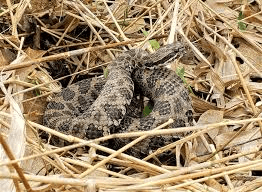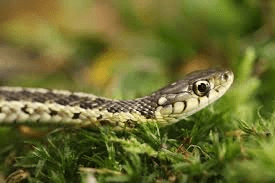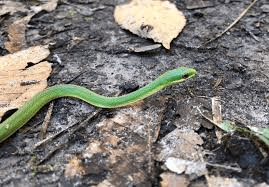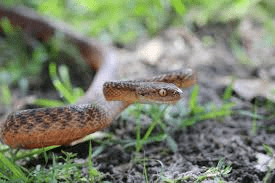Snakes are fascinating creatures that have captured human interest for centuries. They are part of the reptile family and are known for their long, legless bodies. Snakes can be found in a variety of habitats around the world, from tropical forests to deserts. Understanding snakes involves learning about their unique features, the different types of snakes, and where they live.
Snakes are elongated reptiles belonging to the suborder Serpentes. Unlike many other reptiles, snakes do not have legs, making their movement and hunting techniques distinct. They are covered in scales, which can vary in texture and color, and they use their forked tongues to sense their surroundings.
Studying snakes is important for several reasons. They play crucial roles in ecosystems as predators and prey, helping control populations of pests and other small animals. Understanding snakes also helps in avoiding harmful encounters with venomous species and contributes to the broader knowledge of biodiversity and evolutionary biology.
Key Characteristics of Snakes
Snakes have several unique features that distinguish them from other reptiles. Here are some key characteristics:
1. Legless Bodies
One of the most obvious traits of snakes is their lack of legs. Instead of walking, snakes slither across the ground using their muscles and scales. Their body structure allows them to move efficiently through a variety of environments, including grass, sand, and water.
2. Scales
Snakes have a protective layer of overlapping scales that cover their bodies. These scales are made of keratin, the same substance found in human hair and nails. The texture and color of scales can vary widely among snake species and can help with camouflage, hunting, and protection.
3. Forked Tongue
Snakes use their forked tongues to gather chemical information from their environment. As the snake flicks its tongue in and out, it picks up scent particles from the air and transfers them to a specialized organ in the roof of its mouth called the Jacobson’s organ. This helps the snake detect prey, predators, and mates.
4. Flexible Jaw
Snakes have highly flexible jaws that allow them to consume prey much larger than their head. This flexibility is due to the structure of their jawbones, which are connected by elastic ligaments. Snakes do not chew their food; instead, they swallow it whole.
5. Venom and Fangs
Some snake species have venom, which they use to immobilize or kill their prey. Venomous snakes have specialized fangs that can inject venom into their victims. The venom can vary from species to species, ranging from mild to highly toxic. Not all snakes are venomous; many are non-venomous and kill their prey through constriction.
Common Snake Species and Their Habitats

There are thousands of snake species spread across different parts of the world. Here, we’ll look at some common snake species and where they are typically found.
1. Eastern Garter Snake (Thamnophis sirtalis)
Habitat: Eastern garter snakes are found throughout eastern North America, from Canada to the southeastern United States. They live in a variety of habitats, including grasslands, forests, and wetlands.
Characteristics: These snakes are usually green or brown with yellow or white stripes running along their length. They are non-venomous and feed on insects, amphibians, and small rodents.
Behavior: Eastern garter snakes are often seen basking in the sun. They are generally harmless to humans and are commonly encountered in gardens and parks.
2. Ball Python (Python regius)
Habitat: Ball pythons are native to West and Central Africa. They are often found in grasslands, savannas, and forests.
Characteristics: Ball pythons are known for their distinctive patterns of brown, black, and gold. They are non-venomous constrictors, which means they kill their prey by wrapping around it and squeezing until it suffocates.
Behavior: Ball pythons are generally shy and prefer to hide in burrows or under debris. They are popular pets due to their docile nature and manageable size.
3. King Cobra (Ophiophagus hannah)
Habitat: The king cobra is found in Southeast Asia, including countries like India, Thailand, and Indonesia. They inhabit forests, swamps, and grasslands.
Characteristics: King cobras are the longest venomous snakes in the world, reaching lengths of up to 18 feet (5.5 meters). They have a distinctive hood that they expand when threatened. Their venom is highly toxic and can be fatal to humans if not treated promptly.
Behavior: King cobras are solitary and primarily feed on other snakes, including venomous species. They are considered aggressive and should be approached with caution.
4. Rattlesnake (Crotalus spp.)
Habitat: Rattlesnakes are native to the Americas, from the southwestern United States to Argentina. They are commonly found in deserts, grasslands, and rocky areas.
Characteristics: Rattlesnakes are easily recognized by the rattle at the end of their tails, which they use to warn potential threats. Their venom can be potent, causing severe pain and tissue damage.
Behavior: Rattlesnakes are generally not aggressive unless threatened. They use their rattles as a warning before striking. They prefer to avoid humans and often only bite in self-defense.
5. Reticulated Python (Malayopython reticulatus)
Habitat: The reticulated python is found in Southeast Asia, including the Philippines, Indonesia, and Malaysia. They live in tropical forests, swamps, and grasslands.
Characteristics: This is one of the largest snake species in the world, reaching lengths of up to 20 feet (6 meters). They have a distinctive reticulated pattern of black and gold scales.
Behavior: Reticulated pythons are powerful constrictors that prey on large animals, including deer and pigs. They are solitary and primarily nocturnal.
Read Also: Rose Chafer: Description, Damages Caused, Control and Preventive Measures
Ecological Roles of Snakes

Snakes play vital roles in their ecosystems, influencing various aspects of ecological balance. Understanding these roles helps us appreciate their importance in maintaining healthy environments.
1. Predator Control
One of the primary ecological roles of snakes is controlling populations of other animals. Snakes are effective predators of rodents, insects, amphibians, and even other reptiles. By keeping the numbers of these prey species in check, snakes help prevent overpopulation, which could lead to crop damage, spread of disease, or imbalance in the food chain.
For example, a single king cobra can consume several venomous snakes in its territory, thus reducing the population of other potentially harmful snake species. Similarly, garter snakes control populations of insects and small rodents, which can benefit agricultural practices and reduce the need for pesticides.
2. Prey for Other Animals
Snakes are also a crucial food source for many larger predators, including birds of prey, mammals, and even other snakes. Their role as prey supports the food web by providing nourishment for these predators. This dynamic helps maintain balance among various species within an ecosystem.
For instance, raptors like hawks and eagles often hunt for snakes as a significant part of their diet. By being part of the food chain, snakes contribute to the survival and health of these higher predators.
3. Soil Health
In some ecosystems, snakes contribute to soil health indirectly. As they consume their prey and leave behind waste, they help in nutrient cycling. The decomposition of snake waste adds organic matter to the soil, enriching it and supporting plant growth. This process helps maintain soil fertility and promotes a healthy ecosystem.
4. Seed Dispersal
Certain snake species are involved in seed dispersal. As snakes consume fruits and berries, they can transport seeds to different locations. When they excrete these seeds, they contribute to plant propagation and the growth of vegetation in new areas. This role is especially important in forest ecosystems where plants rely on various animals for seed dispersal.
Rrad Also: Black Spot (Rose Disease): Description, Damages Caused, Control and Preventive Measures
Impact of Snakes on Ecosystem Health

The presence and health of snake populations have a significant impact on the overall health of ecosystems. Here’s how:
1. Biodiversity Maintenance
Snakes contribute to biodiversity by inhabiting a range of ecological niches and interacting with various species. Their predation helps regulate populations of other animals, preventing any single species from dominating the ecosystem. This balance is essential for sustaining a diverse and resilient environment.
2. Pest Control
By preying on rodents and insects, snakes help control populations of pests that can cause agricultural and economic damage. This natural pest control reduces the need for chemical pesticides, which can have harmful environmental effects. For instance, in agricultural areas, snakes can reduce the number of crop-damaging rodents, benefiting farmers and promoting sustainable farming practices.
3. Indicator Species
Some snake species serve as indicator species, meaning their health reflects the overall condition of their environment. Changes in snake populations can signal shifts in habitat quality, pollution levels, or the presence of other environmental stresses. Monitoring these species helps scientists assess ecosystem health and identify potential issues before they become severe.
4. Disease Regulation
Snakes also play a role in regulating the spread of diseases. By controlling populations of rodents and other animals that can carry diseases, snakes help reduce the incidence of zoonotic diseases (diseases that can be transmitted from animals to humans). This natural regulation helps maintain public health and prevents disease outbreaks.
Conservation Status of Snake Species
The conservation status of snake species varies widely, with some species thriving while others face significant threats. Understanding these statuses is crucial for conservation efforts.
1. Threats to Snakes
Many snake species are threatened by habitat loss, pollution, climate change, and human persecution. Deforestation and urbanization destroy their natural habitats, while agricultural and industrial activities introduce pollutants into their environments. Climate change can alter their habitats and food sources, making survival more challenging.
Additionally, snakes are often persecuted due to fear and misunderstanding. Many people kill snakes on sight, despite their important ecological roles. This human conflict, combined with habitat destruction, puts many snake species at risk.
2. Conservation Efforts
Conservation efforts for snakes include habitat protection, public education, and legal protections. Organizations and governments work to preserve natural habitats through the creation of protected areas and wildlife reserves. Education programs aim to reduce fear and promote understanding of snakes, highlighting their ecological importance and benefits.
Legal protections are also in place for certain snake species, especially those that are endangered or threatened. These protections help prevent illegal hunting and trade, allowing populations to recover and thrive.
3. Success Stories
Despite the challenges, there have been successful conservation efforts for some snake species. For example, the Eastern Indigo Snake, once critically endangered due to habitat loss and the pet trade, has seen population recoveries thanks to habitat restoration and conservation programs. Similarly, the Burmese Python in Florida has been targeted by eradication efforts to control their invasive impact on local ecosystems.
Conclusion
Snakes are indispensable components of ecosystems, playing crucial roles in predator control, maintaining biodiversity, and supporting the health of their environments. Their impact extends from regulating prey populations and contributing to soil health to serving as indicator species and controlling pests and diseases.
Conserving snake populations is essential for preserving these ecological roles and maintaining the balance of natural systems. Efforts to protect their habitats, educate the public, and enforce legal protections are vital for ensuring that snakes continue to thrive and contribute to ecosystem health.
Recognizing the importance of snakes and supporting conservation initiatives helps safeguard these remarkable creatures and the complex ecosystems they inhabit. By appreciating their roles and working to protect them, we contribute to the well-being of our planet and the intricate web of life that sustains it.
Read Also: Guide to Waste Management Industry Trends

